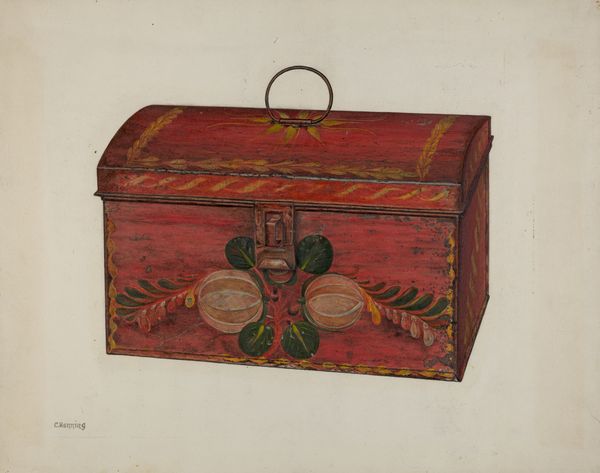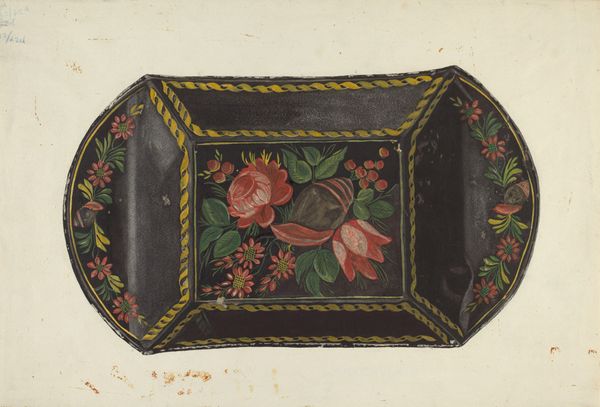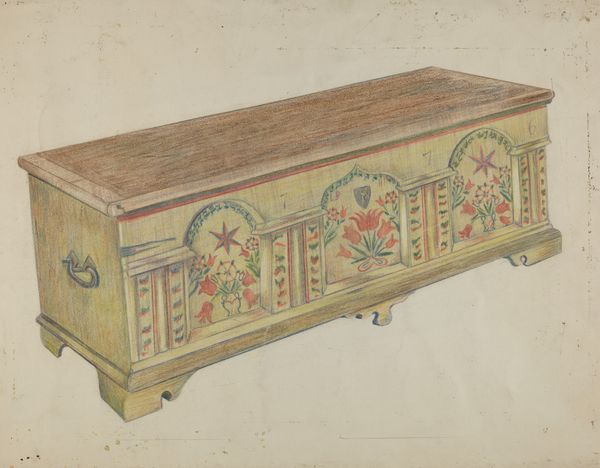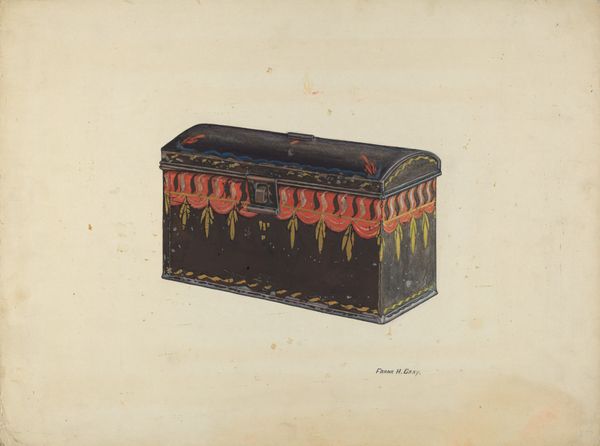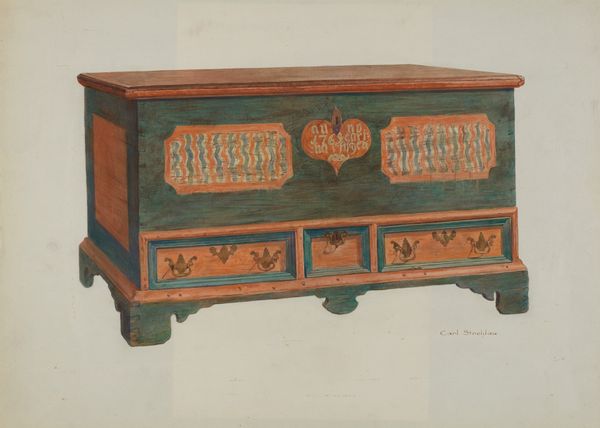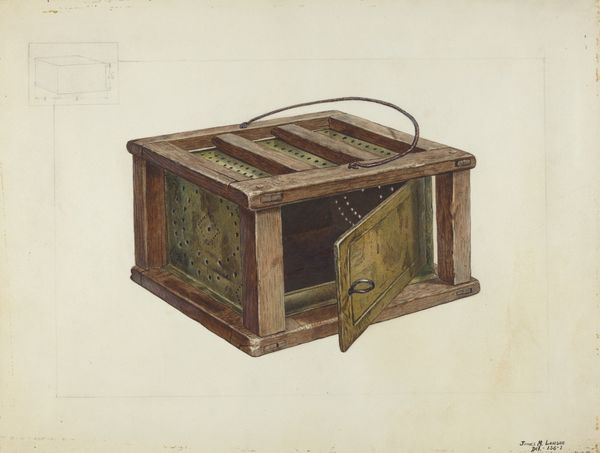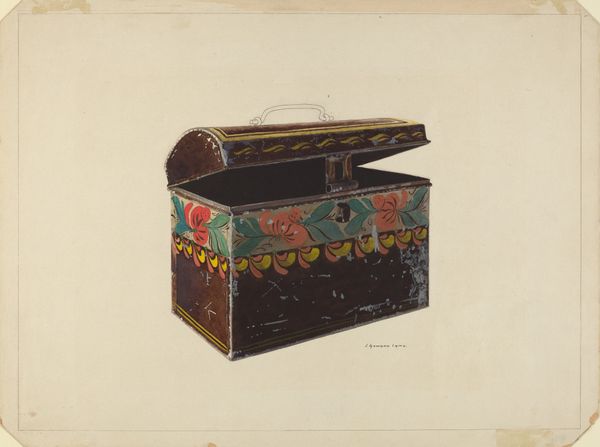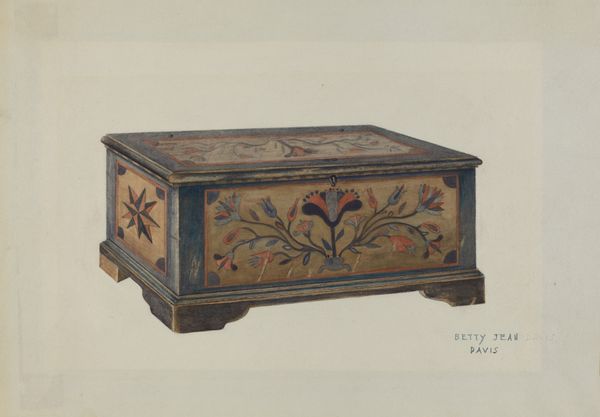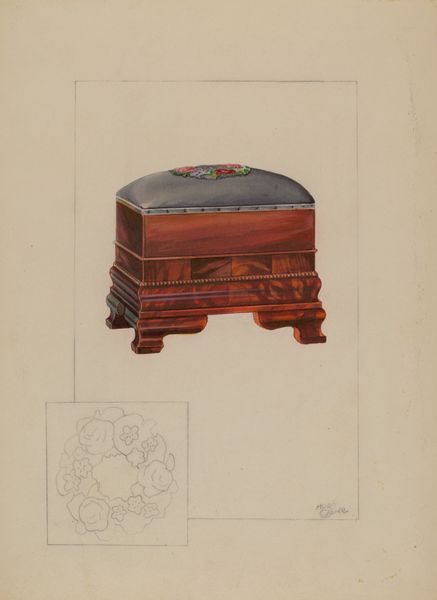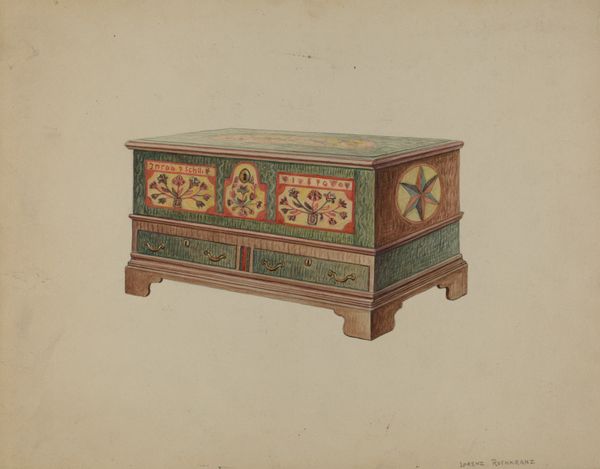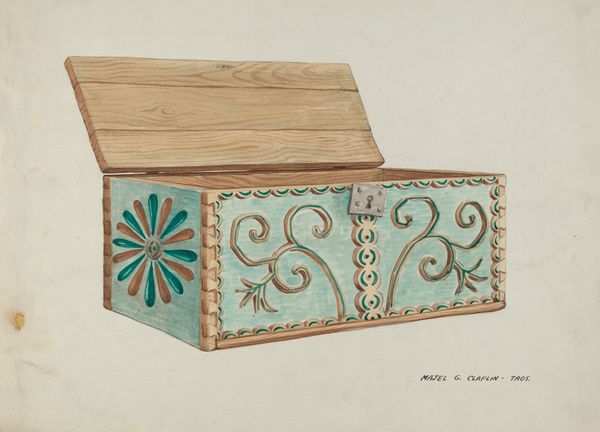
drawing, watercolor
#
drawing
#
watercolor
#
folk-art
#
watercolor
Dimensions: overall: 22.6 x 30.3 cm (8 7/8 x 11 15/16 in.) Original IAD Object: 10 1/4" high; 28 1/2" wide; 4 1/2" deep
Copyright: National Gallery of Art: CC0 1.0
Curator: Looking at this piece, I am immediately drawn into a world of crafted functionality; the image radiates simplicity and tradition. Editor: Indeed! This watercolor and drawing piece is titled "Dough Trough", created circa 1939. We can see an example of Hedwig Emanuel’s commitment to folk-art representation, and the focus on the historical importance of everyday objects. The watercolor captures an image of a wooden vessel traditionally used for mixing dough. Curator: It has an almost whimsical quality, doesn't it? Despite its functional purpose, the decoration gives it a festive, celebratory air, turning the act of bread-making into something almost ritualistic. The twin floral arrangements transform this utilitarian object. They act as visual anchors, reflecting balance and harmony, concepts deeply rooted in human perceptions of well-being. Editor: Absolutely. What's also compelling is thinking about the societal role such a piece would have played. Not just a tool, but a communal hub perhaps? Where generations came together around a fundamental practice, and also think about Hedwig Emanuel recording those traditional objects on paper at the moment it was becoming a past memory, creating a sense of cultural continuity. Curator: It’s interesting to imagine what "Dough Trough" symbolises regarding collective memory; you know, what happens to these objects when we use them for some many years… Editor: The choice of watercolour allows for subtle color gradations that really highlight its humble subject and reinforces a link with artistic depictions that historically brought the lower classes to a global audience, didn't it? In fact, it reminds me a lot of Van Gogh´s work and focus. Curator: I concur. There is something about how Emanuel selected this everyday object that elevate folk art above a decorative appeal. What seemed commonplace back in the past suddenly radiates with emotional depth, reflecting lives tied with craft traditions that were probably forgotten a long time ago. Editor: These insights shed more light on the socio-historical aspects of art, while folk objects reflect traditions through art, carrying deep, historical roots that define them. Curator: Right! Emanuel’s work allows people to contemplate a society’s story via symbolic cultural traces, highlighting human links, memory, and values. Editor: I couldn’t have said it better myself.
Comments
No comments
Be the first to comment and join the conversation on the ultimate creative platform.
